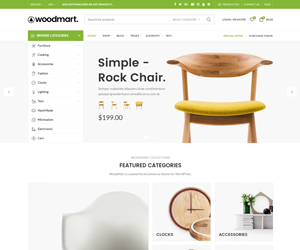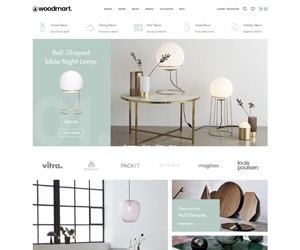Modernism architecture is changing Bangladesh’s look, blending old cultural symbols with new designs. Cities like Dhaka now have buildings where domes and glass meet. This shows that old and new can live together.
I’ve seen this change myself, watching architects mix old traditions with new ideas. They make spaces that show Bangladesh’s past and its dreams for the future.

These designs also think about the hot weather and growing cities. They keep local skills alive. This makes Bangladesh’s buildings special, showing its history and hopes for tomorrow.
This article looks at how Bangladesh is leading in modern architecture. It shows how the country’s buildings are both modern and rooted in its culture.
The Evolution of Modern Architecture in Bangladesh
Looking at Bangladesh’s architecture shows a story of change and new ideas. The old buildings set the stage for new designs. After 1971, architects mixed global styles with local needs.
They used open spaces and simple lines. They also thought about the weather and culture.

In the 1970s and 1980s, Muzharul Islam mixed modern with local materials. Buildings got big windows and used natural air. They used local bricks and tiles too.
This made buildings that fit Bangladesh’s weather but didn’t follow foreign styles too closely. This mix created a unique style seen in Dhaka’s buildings.
Mid century modern architecture showed Bangladesh’s identity. Buildings became symbols of the country’s hopes after gaining freedom. This mix of old and new ideas is seen in today’s projects.
My Journey Exploring Bangladesh’s Architectural Renaissance
Walking through Dhaka’s streets, I saw how post modern architecture meets global trends and local culture. At the Bangladesh University of Engineering and Technology (BUET), students showed me their vision. They adapt international designs to fit Bangladesh’s climate and heritage.
Their models featured decorative arches and open courtyards. These are key to post modern architecture. They help beat the tropical heat while keeping traditional motifs alive.

At the Ahsanullah University of Science and Technology, I saw this balance in action. Its curving concrete forms remind me of regional terraces. Overhangs also provide shade.
Architects use modern materials like ETFE membranes to manage humidity. This shows post modern architecture is not just about looks. It’s also about function. Local firms aim to create spaces that reflect Bangladesh’s identity, not Western styles.
In smaller towns like Rajshahi, I found community centers that blend old and new. These projects show post modern architecture is more than a trend. It’s a conversation between past and present. Each structure tells a story of innovation, shaping Bangladesh’s architectural story.
Case Study: The National Parliament House of Bangladesh
My journey through Bangladesh’s architecture took me to the National Parliament House. It was designed by Louis Kahn. This building shows off modern gothic architecture with its bold shapes and light.
The massive concrete forms look like abstract spires. They remind us of gothic cathedrals but are made of reinforced concrete.
Inside, I saw how Kahn connected the building to Bangladesh’s nature. The sunken plaza and pools reflect the rivers. The facade’s cutouts create moving shadows, blending function and meaning.
This mix of modern gothic and local themes makes the space feel both old and new. It shows how buildings can honor the past while being new.
The Parliament’s design is a lesson for today’s architects. It shows how to balance needs and culture. Its shape, a mix of straight lines and natural surroundings, is a model for combining old and new.
Sustainable Design Solutions in Bangladesh’s Tropical Climate
When I visit new buildings in Dhaka, I see how architects handle the heat and humidity. They use modern tools to plan ventilation and shading. These tools predict how sunlight affects buildings.
They mix old ideas like courtyards with new tech like smart irrigation and solar cooling. At the GreenTech Innovation Hub, they used wind towers and rainwater systems. This cut water use by 30%.
Designers choose materials that don’t soak up heat. They use light concrete and bamboo. EcoDesign Bangladesh uses climate data to make buildings cooler before they’re built.
Urban Development and Modern Architecture in Bangladesh
Urban growth in cities like Dhaka and Chittagong needs new housing ideas. Architects are making small homes that use space well. They focus on vertical designs, modular layouts, and lots of natural light.
Developers are mixing homes with shops and public areas. In Chittagong, I saw homes next to gardens and stores. This creates lively areas. The homes also have green roofs and save water, fitting the tropical climate.
Urban planners talk about affordable homes. They use smart designs like sliding walls and rooms that do many things. This mix of old and new makes living in the city better. Working together, public and private groups aim to make cities walkable and connected.
Leading Architects Reshaping Bangladesh’s Skyline
In Bangladesh, visionary architects are changing the way we see buildings. Pioneers like Muzharul Islam and Bashirul Haq started with modern ideas. Now, younger architects mix global trends with local needs.
They find inspiration in architecture japan modern. This style focuses on simplicity and blending with nature. Their designs often include open spaces and lots of natural light.
Marina Tabassum’s designs show this mix well. She uses local materials and simple layouts, inspired by Japan’s efficient spaces. Architects in Dhaka are using these ideas to fit Bangladesh’s hot climate.
They focus on letting in air and using shaded areas. This way, they create homes that are both traditional and modern.
In studio visits, I saw young designers learn from Tadao Ando’s work. They then apply these lessons to Dhaka’s buildings. This mix creates a unique skyline in Bangladesh.
It combines Japanese courtyards with local brick walls. Modern ideas also adjust to the rainy season and crowded cities.
Modern Residential Architecture: Balancing Tradition with Innovation
In my visits to different neighborhoods, I saw how modern homes in Bangladesh are changing. Architects mix old values with new looks. In rich areas, big homes use local materials. In growing places, simple homes focus on being affordable and useful.
Today’s homes have flexible layouts and open spaces. Many projects add courtyards for light and air. This makes homes bright and cool, fitting today’s needs.
Screened walls and modular furniture keep privacy important. This lets families live together comfortably, keeping modern standards.
In Dhaka’s suburbs, homes are built to save energy. They use cool systems and collect rainwater. Local artists work with architects to add special touches, like lattice screens. This mix keeps homes connected to Bangladesh’s culture while being modern.
Conclusion: The Future of Architectural Innovation in Bangladesh
Exploring Bangladesh’s architecture shows a mix of old and new. The country blends traditional methods with modern designs. This is similar to how modern Greek architecture combines ancient styles with new ones.
In Dhaka, the National Parliament House is a great example. It uses local symbols but is built with the latest technology. This shows that old and new can work together well.
Sustainability is key in Bangladesh’s architecture. Architects are finding ways to deal with the climate, just like in Greece. But, there are big challenges like growing cities and saving old buildings.
Money also plays a big role in what materials are used. But, this has led to creative and green designs. It shows that you can be smart and save money at the same time.
Bangladesh has a chance to change the world of architecture. Instead of copying others, it can show its own way of being modern. By learning from places like Greece, Bangladesh could lead in combining tradition with innovation.
The future of Bangladesh’s architecture depends on working together. It needs the help of leaders, designers, and people to make it happen. By focusing on being green and keeping old buildings, Bangladesh can make a big impact.













